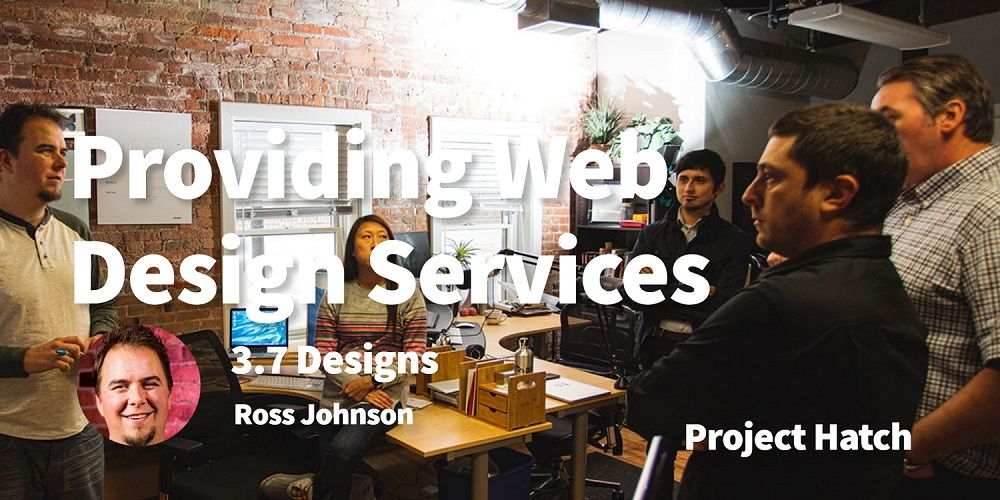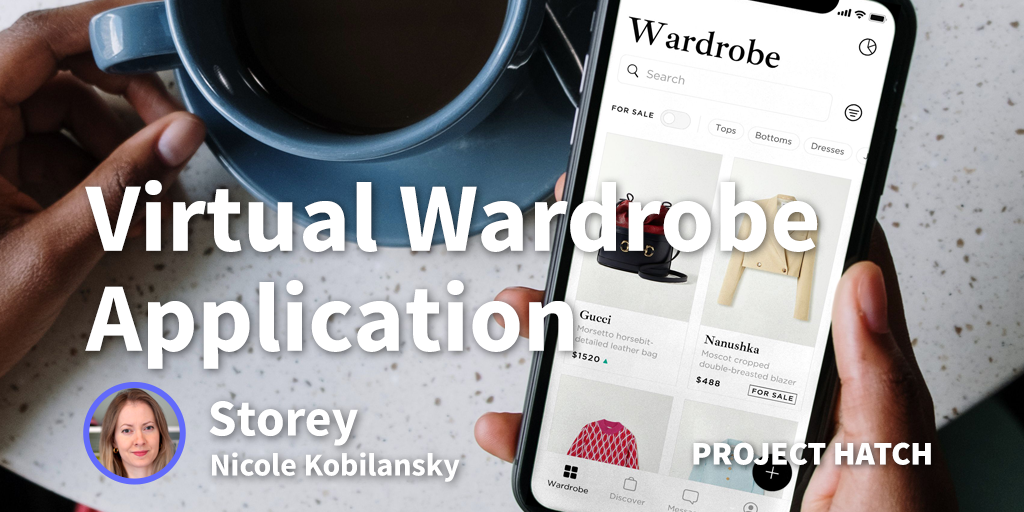I officially started 3.7 Designs early 2005. In many ways, it was an overnight shift in mindset. For years prior I had offered freelance IT services to small businesses in town, and in the early 2000s the “computer person” typically handled the website as well.
I was finishing up college pursuing a degree in social science with a minor in business, and it occurred to me that I enjoyed designing websites significantly more than social science and IT. In the back of my mind, I thought it would be fun to have a web design business.
Speaking honestly, I wasn’t the best of students. I put in enough effort to pass, but I was often distracted. I felt bad about it too. I figured I would never be that successful because I wasn’t successful at school.
While 3.7 Designs was officially registered in 2005, I had only worked on one project where the client stiffed me of any payment. Regardless, I wasn’t trying that hard. In 2006, my brother unexpectedly passed away. While hard to pinpoint, something about that experience changed my attitude, practically overnight. I decided I was going to give this business all my effort instead of drifting through college and life.
I was fortunate that I already had a list of contacts to pitch, my existing IT clients. I also had a short window of living expenses covered while I finished my degree. I simply reached out to my existing clients and asked them about what projects they had planned for the year, and said I’d like to help them succeed. This landed the first handful of paying websites and when you’re young and single, I didn’t need much money to survive.
I was extremely frugal to begin with. The only money I spent on the company was $600 to purchase a new HP laptop. Beyond that, I minimized as much spending as possible. I even drove a truck I purchased for less than $1,000 to meetings, often parking in the back so no one would see me get out of it. Nearly 15 years later, part of me still has an overwhelming urge to minimize spending and save more capital as a cushion.
How do you handle your customers?
Running a creative service business can be challenging, and sometimes working with clients is the most challenging part. Web design is an interesting space, to an outsider building a website can appear much simpler than it actually is. In my experience, some relate it to building a “clickable brochure” when it’s much closer to building custom software.
Layer on wide ranges of personal opinions on how things “should look” or “should work,” and much of your effort can be spent trying to talk clients out of bad ideas. This isn’t the clients fault. It’s not their job to be the experts, it’s ours. This means that part of what clients are paying us for is to educate and guide them along the way. We have to anticipate having discussions and providing push-back.
The more you educate your client the better they understand the complexity of what they’ve asked you to do. Through education you position yourself as the expert, and that design decisions are made intentionally and with reason. This increases trust and reduces requests based on personal opinion. The other approach that has worked well for us is having an iterative approach to the process. We start at a high level, initially our deliverables are fuzzy, and theoretical. At each stage we increase the fidelity, adding detail and producing deliverables that look closer to a finished web page. This facilitates buy-in and discussion throughout the process.
To discuss in more concrete terms, we start projects by producing design discovery and strategy documents. Essentially we say “this is what we’re seeing, this is our understanding of your business, objectives, and your target market… and based on that, here is how we approach accomplishing your objectives.” Then, we create planning deliverables like wireframes, mood boards, sitemaps, calls to action, etc. so clients can understand the high level approach before we set on designing what pages and experiences will actually look and feel like.
In terms of communication, early and often yet just enough is key. Clients like to be kept in the loop, but they have their own tasks and projects to complete -- they don’t want to be bogged down in unnecessary meetings and emails.
Do you have any entrepreneurial background prior to launching your to companies?
I started a handful of businesses prior to this one. In high school I found out it was fairly easy to register for a sales tax license and get wholesale prices on computer parts. I sold custom computers and parts to my friends. It wasn’t very profitable, as I quickly learned you needed to sell a lot of volume to get the best prices.
I was an IT consultant after that, offering as needed support to local businesses. This was a good way to make extra money in college. There was a brief period where I was fabricating custom car parts and selling them on ebay, but quickly found that the time invested and what I could charge didn’t make it that worthwhile.
My dad owned a heating and cooling company, which made me realize that starting or owning your own business was possible. I started my companies in the 90s and early 2000s, when very few people were talking about entrepreneurship. It wasn’t as spoken an option as it was now. Most of my friends looked at me funny when I said I wanted to be a business owner, one even said “I’d rather work for the man where it’s safe and stable.”
What motivates you when things go wrong? What is the end goal?
Freedom motivates me more than anything. Having run businesses my entire adult career, there is nothing I cherish more than complete autonomy. All businesses will have ups and downs, wins and losses. When things are most stressful, I can always think about what it would be like to leave business ownership and immediately I’m grateful for the situation I’m in. I am in complete control of my success and my time, and I will never take that for granted.
As a designer, my innate state is to look at everything as a problem to be solved. This has benefited me greatly over the years, as with each challenge and obstacle I find myself trying to find the system, process, or approach to solve it.
Do you have any advice for someone just starting out?
I have two key pieces of advice for those starting out. First, keep things simple. You can always add complexity later. I have dozens of friends and family who often talk about starting a business, but it never becomes more than talk. While there are probably multiple reasons why they never get traction, unnecessary complexity is one of the most significant factors. Before you try and create the next Tesla, start a simple side business so you can get used to being self employed. Sell your knowledge or a simple service. Then expand from there.
Second, at some point if you stick with it your business will start to become successful. You’ll go from wondering how you’ll pay the bills to having a healthy income. You’ll be tempted to treat yourself or horde away money for a rainy day. Don’t, reinvest in the business. Hire someone, spend more on marketing, buy better equipment or software. Keep the momentum going.
What are your next steps for 3.7 Designs?
Much of our efforts over the last year are focused around operational efficiency, diversification, and differentiation.
As a service business, our profits live and die by efficiency. If we’re spending unnecessary time looking for files, trying to understand what needs to happen next, in unplanned meetings, etc. then we’re cutting into our profits. We’ve invested in documenting our processes, creating checklists, templates, and communication snippets over the past two years. We’re always on the lookout for places we can spend 10 minutes to save 15 minutes in the long run.
We’re also continually trying to improve how and when we schedule work, how we track our time, and how we estimate and quote projects.
We’ve also diversified our revenue streams over the past four years. Five years ago we had two types of service offerings, website design projects and one off support requests. Today, we have on-going retainers, monthly maintenance packages, and software products. We’d like to diversify even more in the coming year.
A growing challenge is the saturation and commoditization of the web design and digital marketing space. When I started the business there were very few options to get adecent website online yourself without knowing at least HTML and CSS. Today, there are a large variety of options and platforms and even in the hands of a non-designer it’s pretty easy to hit “good enough.”
There are tens of thousands of web design companies in the United States. Between the companies taking their website in-house and the sheer number of agencies you could work with, it’s harder to stand out. Prior to a few years ago, what made us different (quality) was hard to articulate.
We’ll write better code, the design will be better - but in a way that’s harder to quantify - just trust us on it, etc…
We’ve spent time and effort to understand our own strengths and weaknesses. In our case, strategy is where we shine. We’ve created a proprietary design framework that ensures we deeply understand the project objectives, the target audience and most importantly how they think and what motivates them. We call this framework “The Six Layers of Design,” it’s a combination of design thinking and design psychology. It allows us to create more effective and compelling designs that perform measurably better.
We’re now working on promoting and building awareness around this approach to better differentiate ourselves from our competitors and charge premium prices.
| Company Name: | 3.7 Designs |
|---|---|
| Founder: | Ross Johnson |






